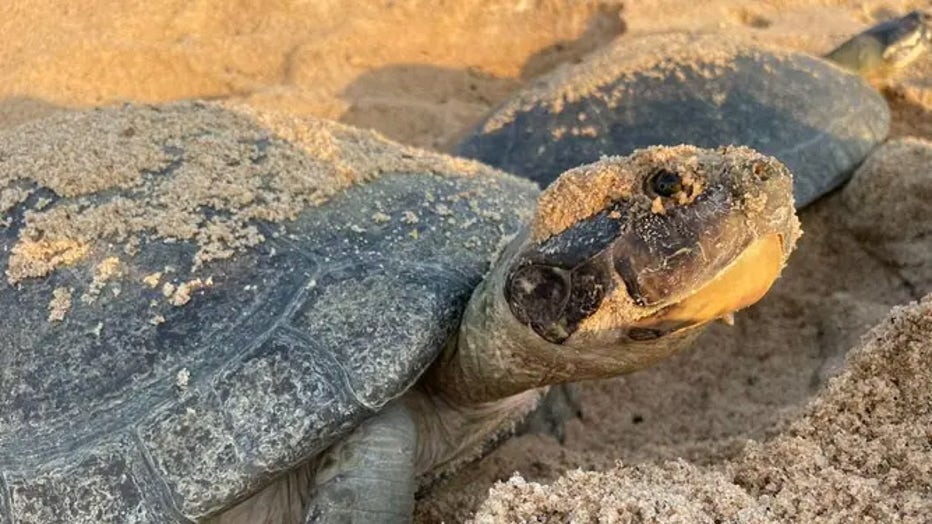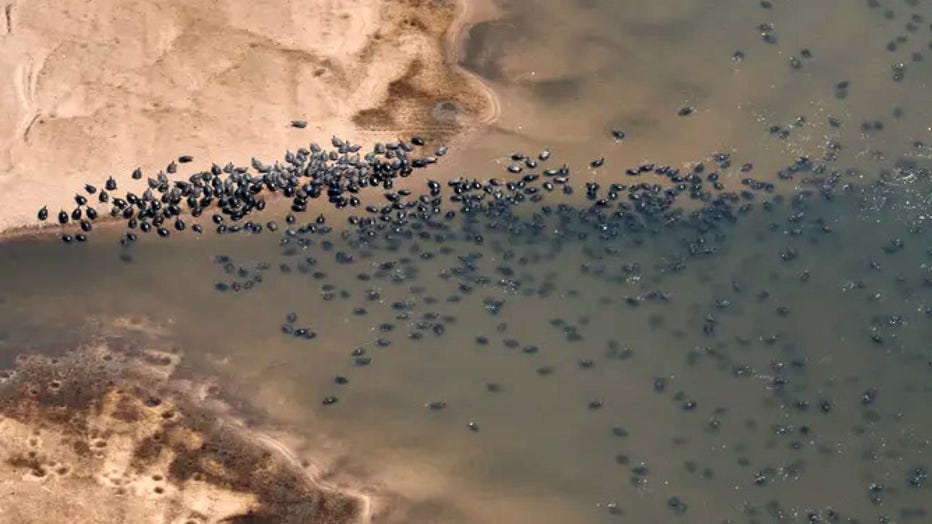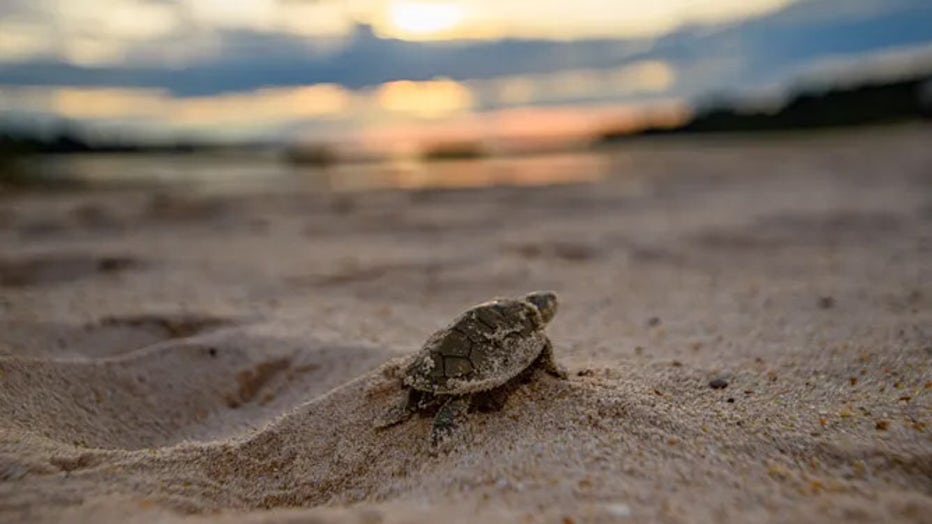Watch: Drone video captures the world’s largest hatching of baby turtles
Between mid-December and early January, millions of baby river turtles emerged from the sandy beaches of the Amazon’s Guaporé/Inténez River.
Located along the border between Brazil and Bolivia, this stretch of river beaches is home to the largest aggregation of nesting turtles in the world.
WHAT ARE COLD-STUNNED SEA TURTLES?

Annual nesting of Giant South American river turtles along the Guaporé/Inténez River in the Amazon. (Wildlife Conservation Society)
The reptiles are giant South American river turtles. With adults reaching 3½ feet long and weighing 200 pounds, they are the largest freshwater turtle species in Latin America.
Nesting for the turtles began in late September when approximately 80,000 adult female turtles gathered on the river beaches along the river.

Adult female turtles burrow themselves into the sand to lay their eggs along the Guaporé/Inténez River. (Camilla Ferrara / Wildlife Conservation Society)
"The annual nesting and hatching of the giant South American river turtle is one (of) Earth’s great natural spectacles," said Camila Ferrara, aquatic turtle specialist for the Wildlife Conservation Society's Brazil program.
WCS spearheads conservation efforts, including those to protect the river turtles.
WATCH: 26 REHABILITATED SEA TURTLES RELEASED BACK INTO THE ATLANTIC
About three months after the females lay their eggs and then depart, their baby turtles hatch within a period of a few weeks.
When they do, the sandy river beaches become covered in millions of tiny shells scurrying toward the river’s edge.

What appear to be little black dots are baby river turtles. (Marcos Amend / Wildlife Conservation Society)
WCS worked with conservation partner Ecovale to capture part of this event, recording hundreds of thousands of baby turtles hatching along the beaches.
"It is visually stunning but also extremely important ecologically to the western Amazon ecosystem," Ferrara said.

Annual hatching of Giant South American river turtles along the Guaporé/Inténez River in the Amazon. (Wildlife Conservation Society)
According to WCS, the turtles play an important ecological role by dispersing seeds that eventually help regenerate vegetation along river corridors. The turtles also make a significant contribution of biomass to the food web of the river.

